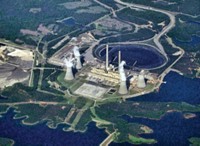Advertisement
Grab your lab coat. Let's get started
Welcome!
Welcome!
Create an account below to get 6 C&EN articles per month, receive newsletters and more - all free.
It seems this is your first time logging in online. Please enter the following information to continue.
As an ACS member you automatically get access to this site. All we need is few more details to create your reading experience.
Not you? Sign in with a different account.
Not you? Sign in with a different account.
ERROR 1
ERROR 1
ERROR 2
ERROR 2
ERROR 2
ERROR 2
ERROR 2
Password and Confirm password must match.
If you have an ACS member number, please enter it here so we can link this account to your membership. (optional)
ERROR 2
ACS values your privacy. By submitting your information, you are gaining access to C&EN and subscribing to our weekly newsletter. We use the information you provide to make your reading experience better, and we will never sell your data to third party members.
Environment
Bad Air Days
Coal Pollution Leads To Town Buyout
February 23, 2004
| A version of this story appeared in
Volume 82, Issue 8
In the mid-1990s, American Electric Power (AEP) began a pollution control renovation project at its Gavin plant in rural Ohio that led the company to buy the town of Cheshire.
Named for Gen. James M. Gavin, a military leader and AEP director, the plant includes two identical coal-fired electric power units, each generating 1,300 MW of electricity, enough to meet the needs of more than 2 million households.
Both units were built in the early 1970s, and they are the world's largest coal-fired power units.
After 20 years of operation, AEP began installing a series of pollution control devices. Since then, it has spent more than $850 million to reduce by 90% its nitrogen oxide and sulfur dioxide air emissions, says Dale Heydlauff, senior vice president for governmental and environmental affairs.
After AEP installed a selective catalytic reduction system in 2001 to cut NOx emissions, however, residents began noticing an exhaust plume or, as they put it, a sulfuric "blue haze" at ground level in the town.
The residents complained of breathing difficulties, burning eyes, sore throats, and other problems from the haze of sulfuric acid.
The company agreed to make changes to address the problem, but many of Cheshire's 200 residents wanted out. In the end, AEP agreed with them and paid $20 million for the town, which it now uses as a coal staging area.
AEP is the nation's largest generator of electricity (199 million MW-hours) as well as SOx (1 million tons), NOx (487,000 tons), carbon dioxide (191.5 million tons), and mercury (4.5 tons), according to EPA data compiled in a report by the Coalition for Environmentally Responsible Economies, the Natural Resources Defense Council, and the Public Service Enterprise Group.
Heydlauff predicts that AEP will have spent $3 billion for pollution control retrofits by the end of this decade. For comparison, AEP reports annual revenues for 2003 of $14.5 billion and $975 million in earnings.
MORE ON THIS STORY



Join the conversation
Contact the reporter
Submit a Letter to the Editor for publication
Engage with us on Twitter